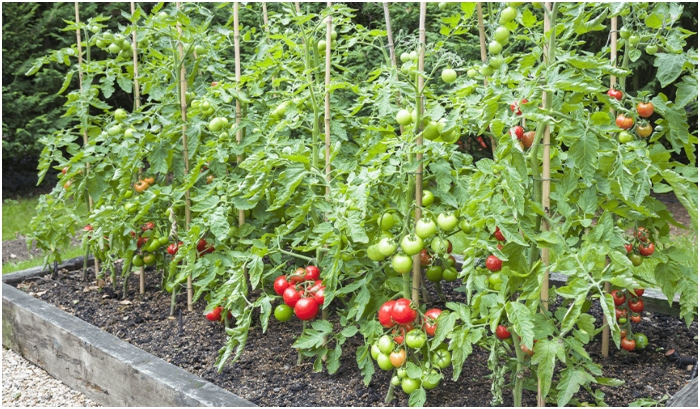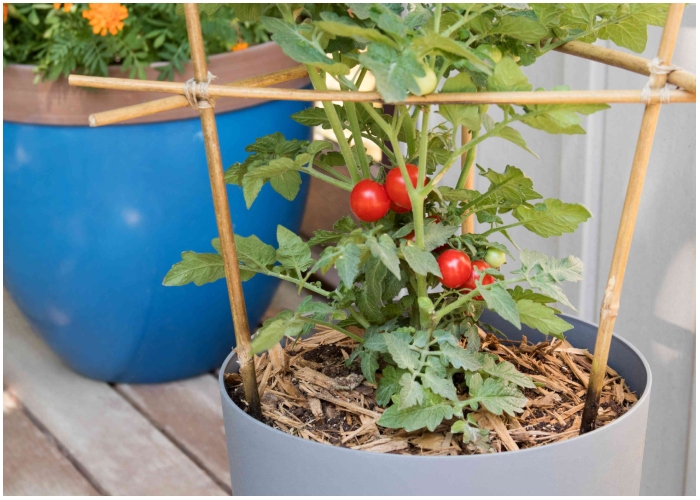Growing delicious tomatoes is achievable if you understand their needs. Whether you are cultivating beefsteak tomatoes for their mild, savory flavor or the irresistibly sweet sun sugar cherry tomatoes, implementing the right gardening techniques can greatly enhance their taste and health. Here are the top tips for nurturing thriving tomato plants.

-
Maximize Sun Exposure
Tomato plants thrive in sunlight, requiring 7-8 hours of direct sun each day to develop fully. Less than this can hinder their growth, so choose the sunniest part of your garden free from shade caused by trees, buildings, or fences. Support your plants with stakes or tomato cages to ensure they stay upright and get maximum exposure to sunlight.
-
Prepare and Enrich Your Soil
The quality of the soil is crucial, whether you’re planting tomatoes in containers or garden beds. Use high-quality potting soil for containers. For garden beds, conduct a soil test to determine nutrient deficiencies and pH levels. Tomatoes prefer a pH between 6.5 and 6.8, meaning slightly acidic soil. Fix your soil based on test results to create the ideal growing environment.
-
Choose the Right Fertilizer
Tomatoes are heavy feeders, especially during periods of rapid growth. To nourish your plants effectively, opt for a water-soluble tomato-specific fertilizer. If soil tests reveal nutrient imbalances, select a fertilizer that compensates for these deficiencies. Apply fertilizer weekly and consider using a transplant formula to support your tomatoes as they establish.
-
Water Regularly and Consistently
Consistent watering is key to growing juicy tomatoes. Irregular watering can lead to issues like split skins and blossom end rot. Aim to water in the evening every other day, adjusting based on weather conditions. Drip irrigation systems or soaker hoses are ideal for providing steady moisture without excess, targeting the soil level to strengthen roots and minimize leaf diseases.
-
Mulch to Retain Moisture
Mulching helps retain soil moisture and prevents it from evaporating quickly under the sun. Choose a natural, dye-free mulch such as shredded bark or leaf mold. Mulch also suppresses weed growth, which competes with tomatoes for nutrients.
-
Prune Tomato Suckers
Pruning suckers, or the small stems that sprout from the junctions of larger branches, can boost your plant’s productivity. These suckers draw energy away from the main growth. Pinching them off helps redirect energy to fruit development, enhancing both the size and speed of your tomato harvest.

-
Plant Deeply
Planting tomatoes deeply can encourage a robust root system. Settle the plant so that the bottom set of leaves is just above the soil surface. Some gardeners use a technique where tomatoes are planted sideways to spread the roots more broadly, providing greater stability and nutrient absorption as the plant rights itself toward the sun.
-
Assist with Pollination
While garden pollinators usually handle tomato pollination, you can help, especially in controlled environments like greenhouses. Gently tap each flower with a clean brush to distribute pollen. This simple act can significantly increase fruit production.
-
Keep Plants Healthy
Regularly remove dead or damaged leaves to conserve the plant’s energy for fruit production. Such plant material can harbor fungi and pests. Use sanitized shears to cut away these parts and dispose of them properly to prevent the spread of disease.
-
Rotate Your Crops
Crop rotation is a vital strategy to prevent diseases year after year. Pathogens can survive through the winter and re-infest the same spot. By changing the location of your tomato plants annually, you reduce the risk of disease and promote a healthier crop.
Start Planting Now
With the right care, tomato plants can be a rewarding addition to your garden. Visit your local nursery to explore the variety of tomato plants available, including both classic favorites and new, exciting hybrids. With these tips, you’re well on your way to enjoying the most flavorful tomatoes you’ve ever grown.